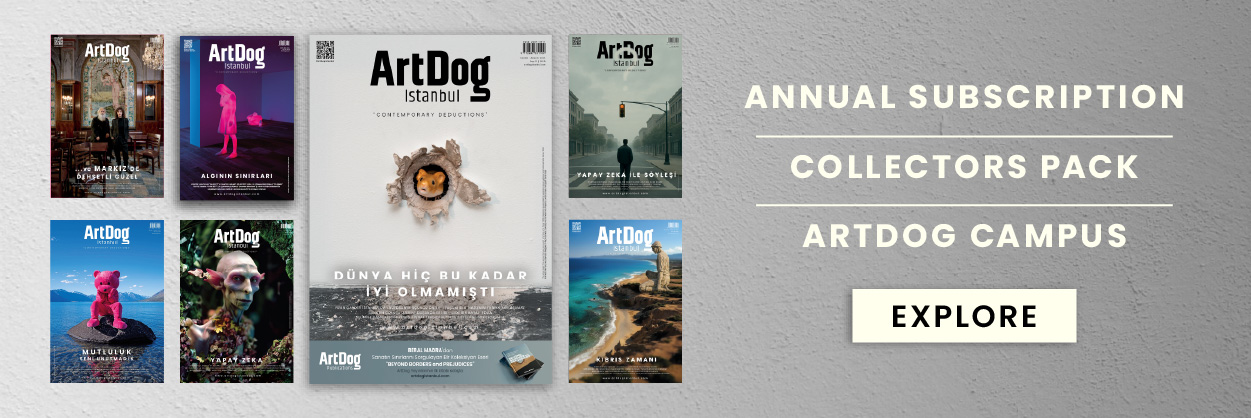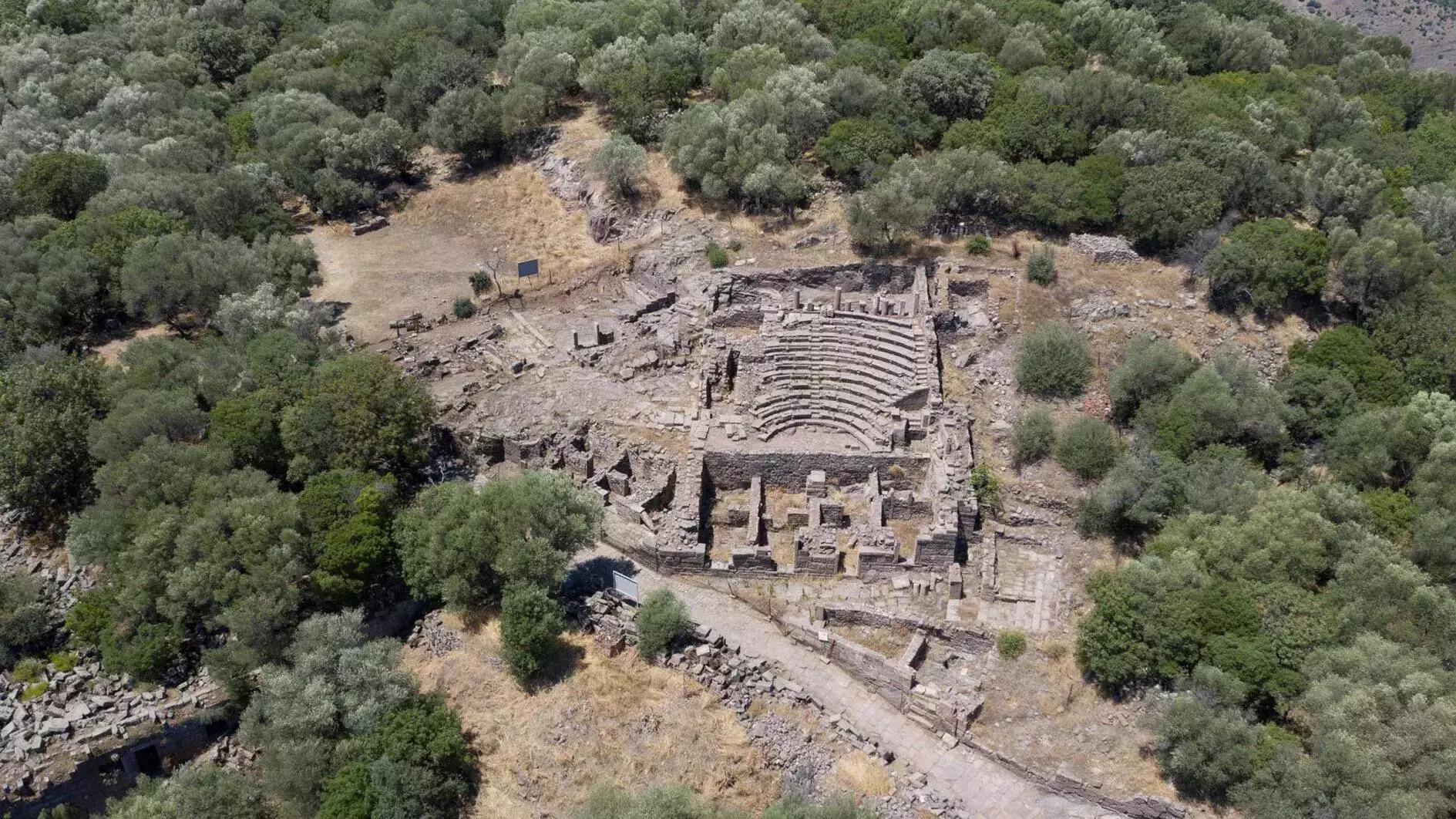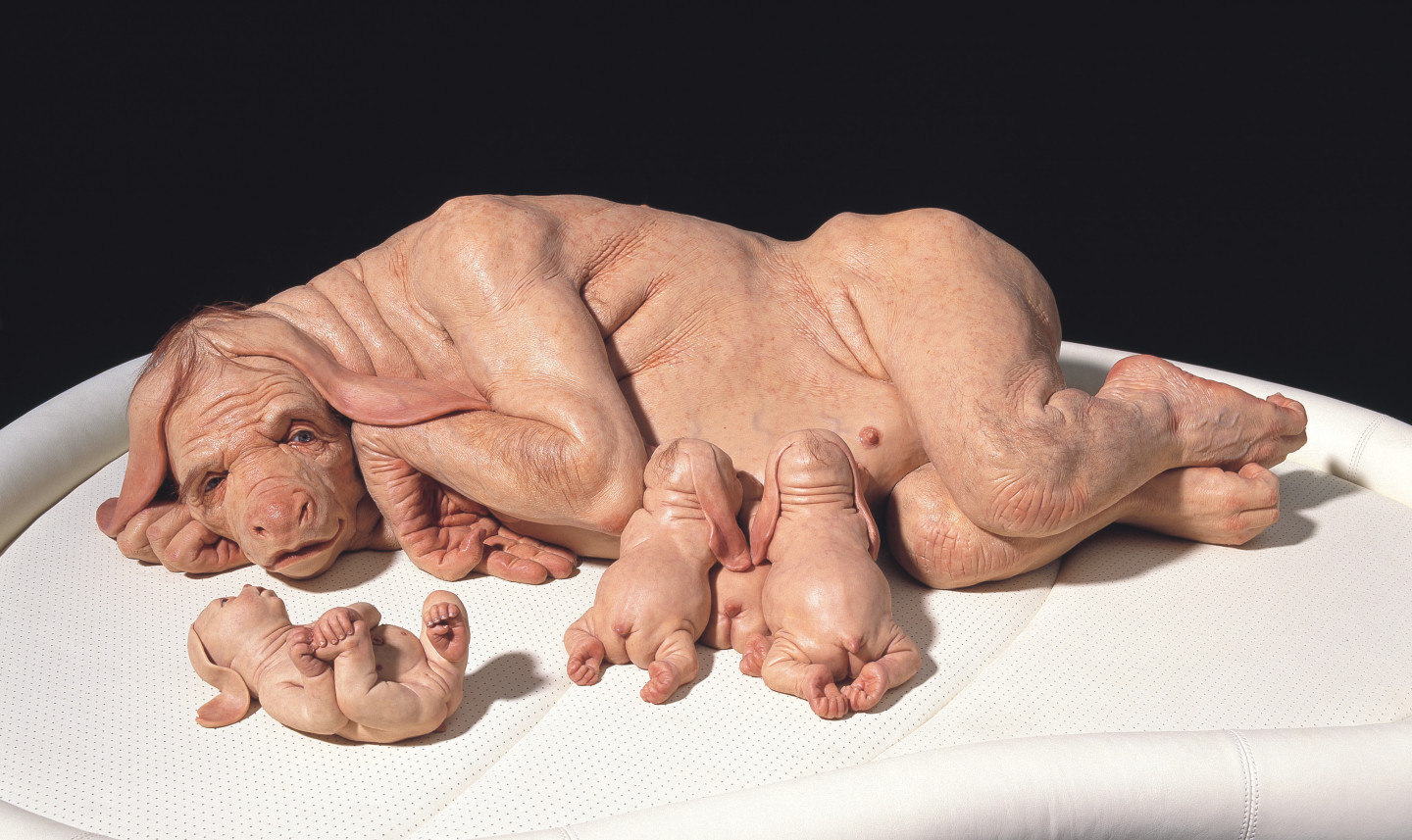An agora (city square) has been discovered during excavations in the 2,700-year-old ancient city of Aigai, located in the western province of Manisa.
Ongoing work to unearth the agora, situated next to the parliament building, has also revealed bull-head reliefs and inscriptions related to the god Apollo on the columns in the square.
Aigai, found within the borders of the Yuntdağıköseler neighborhood in the Yunusemre district, is one of the 12 Aeolian cities established in western Anatolia. The city was a significant center of trade during the Hellenistic era.
The 2,200-year-old agora was discovered as part of the “Heritage to the Future Project,” conducted by the General Directorate of Cultural Heritage and Museums.
Professor Yusuf Sezgin, the head of the Manisa Celal Bayar University (MCBU) Archaeology Department and the excavation director, has been involved in the Aigai excavations for 21 years. He provided insights into the work and the significance of the newly discovered agora.
Sezgin explained that they aim to fully uncover the agora, the heart and center of the ancient city: “This area is where all public buildings were concentrated and where people spent their daily lives. Around the square, there are columned porticos, known as ‘stoas.’ In this respect, this is a very important area. One of the symbols of Aigai is the agora building located here. As a result of our work, we will particularly focus on the parts of the building that need restoration and conservation.” Sezgin noted that the ancient city dates back 2,700 years, which aligns with the construction of the agora and the city’s parliament building, supported by some archaeological evidence.
During the agora excavations, Sezgin mentioned that they encountered intriguing findings: “We found bull-headed reliefs under the roofs of stoas, which are quite unusual in the ancient world. We believe these are significant, as bull heads are typically associated with gods. We have found similar examples in various places in the ancient world. It is most likely related to the god Apollo, as we also discovered inscriptions dedicated to Apollo near the area where we are working.”
“These types of stoas generally have a simple architectural structure, but if they are connected to a votive offering, it’s possible that these embossed bull heads are linked to a ritual or the gods. This may be related to a major war or a votive offering made to the gods in connection with the city’s reconstruction,” Sezgin added.
Since 2004, excavations in the ancient city of Aigai have unearthed tens of thousands of artifacts and ceramic pieces, which have been restored and delivered to the Manisa Museum.







